#road mapping and monitoring software
Explore tagged Tumblr posts
Text
Revolutionising Road Construction with Technology: Enhancing Project Management for a Smarter Future
The road construction industry plays a vital role in shaping modern infrastructure, driving economic growth, and ensuring efficient transportation networks. However, it faces persistent challenges, including project delays, safety risks, cost overruns, and inefficient resource management. As construction projects grow in complexity, the need for innovative solutions to boost productivity and efficiency has never been more critical.
Learn more https://www.cyberswift.com/blog/revolutionising-road-construction-with-technology-enhancing-project-management-for-a-smarter-future/
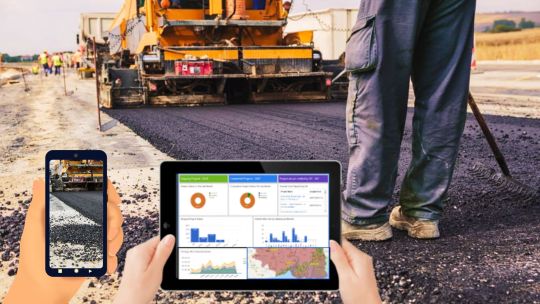
#road construction monitoring software#road project tracking system#csrmonitoringsoftware#road construction progress tracking#gis based road monitoring system#road construction management software#real time road project monitoring#road construction tracking application#construction project tracking system#road project progress monitoring#road asset management software#road construction analytics tools#road infrastructure monitoring system#construction monitoring software for roads#road project planning software#digital road project monitoring system#smart road monitoring solutions#road construction quality monitoring#road project performance tracking#road mapping and monitoring software
0 notes
Text
>>You're not sure what you're even doing, really. This job turned into a debacle and a half, and you're three bodies into this thing. Breaking in was easy, these WERE humans, but they definitely aren't anymore. Long consumed by the machine they've been living inside of, these are full-gone cyborgs, turned over to a machine hive-mind. As a consequence, you don't feel too bad about killing these guys. There's barely any food here to eat, and the protein bars you HAVE found are ass and a half.
>>Standing at this terminal inside the machine, you wonder if you'd maybe have liked to have done this kind of thing yourself once, being a roving historian like this. This universe is well-known to you, though, and you want NEW, and badly. You wish you could be rid of your memories, to try again without the taint of the decisions only YOU could make... You also try very, very hard not to let this distract you from the ongoing hack. The master computer inside this structure doesn't know you're here, yet. Partition is disguising you.
>>That thought gives you a moment's pause, both in the real world, at the computer desk, and deep inside the vivid world of the computer itself. Alien software, with just a hint of human wailing, not too disturbing after your hundredth exposure to such things, but you look over your digital shoulder and back to your body. You look at yourself in a different light. For a split second, a second so tangible you could almost grab the thing and hold onto it, you looked back and saw yourself as the haunting image does.
>>You realize, as you refocus your nosing-around-in-the-system efforts, that you really haven't learned to give yourself the sympathy you owe yourself. The only thing you felt in that weird out-of-body, in-of-body experience was sadness. You let out an audible sigh at that, and click-clack away some more at the keyboard. It's a cruel thing to want to be rid of you. The usual kind of murder that is your fare, that's... normal, that's the kind of life you lead, you're a violent animal who's been in a violent world since you were a kid. But it's a different kind of murder to be rid of yourself in such a manner.
>>As the computer processes your inputs (and puts up with your psionic presence, invisibly worming your way through its systems), your left hand -the flesh one- reaches up and clenches your chest. It would be nice to look back, to get rid of the mistakes without getting rid of the charms that make you, YOU. And the couple of times its happened, you were happy for a little while, sure. There's a kind of misery in that though, too.
>>There's no fixing the past, you'll never be able to lie to yourself about who you've been, what you've done, what's been done to you. You realize that reconciliation with yourself is just... letting yourself be. You don't even see the rickety old bars you set out of reach as the cage they are; or else, you didn't. But as the monitors at the terminal begin displaying preview images of the maps and information you're seeking to download, you shake your head at those bars in your mind.
>>"What the fuck..." Is all you can really say to yourself. You've never really gone this far down the road of... figuring it out. It feels a silly trap to have locked yourself into, but at the same time, it's a sad thing that you know intimately. Every burr on those bars is familiar to you.
>>It seems like you have some hard questions to ask yourself.
4 notes
·
View notes
Text
Graphical Direction Ideas - Part 1
In this blog post, I would like to go over some research on possible directions for the graphical direction of this game.
Supreme Commander Forged Alliance


Since Supreme Commander is my "main ref", it's worth looking at it for graphical direction as well. It has a realistic, low poly and minimalist style graphic direction. Whilst being low poly, the game still looks great and has held up very well over all these years since it released in 2007. Because of this, it is worth considering to go in the same direction for graphical style.
HighFleet
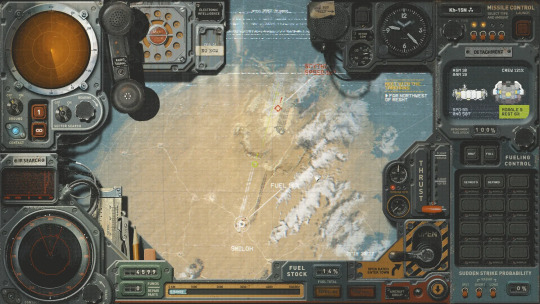
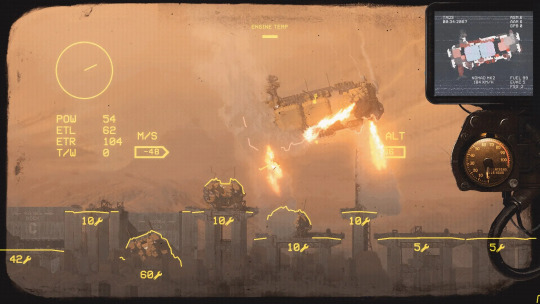
An alternative approach might involve adopting a design similar to HighFleet, especially emulating the tactical map shown in the first screenshot above. This style prioritizes functionality over aesthetics, presenting a realistic, albeit minimalistic, appearance that integrates effectively. Nevertheless, it's worth noting that this design is strictly limited to UI elements without representing any units, contrasting with my game which will feature 3D units.
The second screenshot provides additional inspiration for the HUD and UI, emphasizing a design that values functionality. The array of screens and dials positioned along the right side, coupled with the simulated dirt on the window, contributes to an enhanced sense of immersion by adding a layer of realism and detail to the user interface.
Homeworld (Map view)
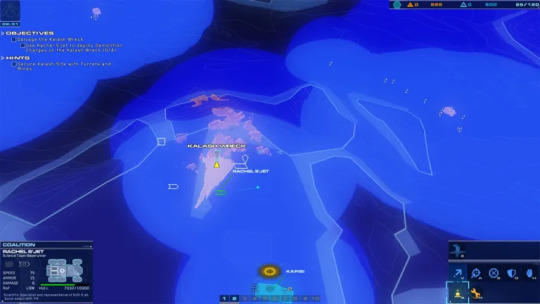
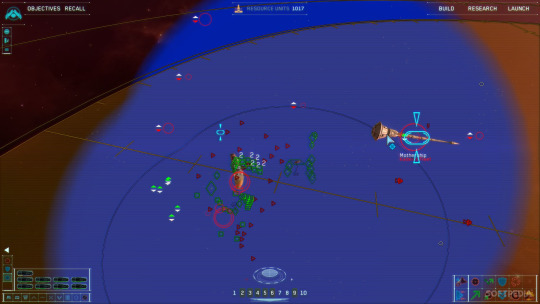
Another type of possible graphic direction could be something similar to Homeworld's map/radar view, this is an overlay mode the player can enable to see the map in a way that highlights certain elements on the map.
Something similar to this, could also serve my game as well. It could work well with the immersive style of UI I have in mind. For example, the game's graphics could be representative of looking through a type of monitor in the control centre, rather than being realistic.
Act of Aggression (Tactical Map)
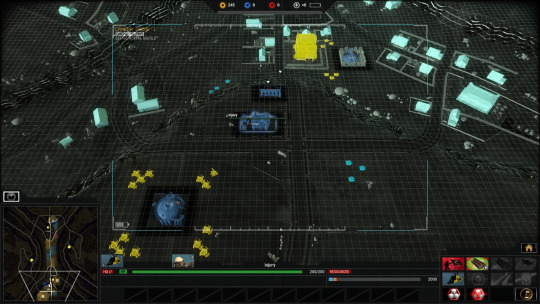
Act of Aggression is another RTS game that features a tactical heat map overlay (the game's default graphics are realistic). The heat map overlay is another useful reference for my own game if I plan to go in this direction.
X4 Foundations (Tactical Map)

Furthermore, X4 Foundations which is a space-sim game also features a tactical overlay map worth looking at, however it is much more minimal than what I would like and features only icons.
Ashes of the Singularity (Tactical Map)


The tactical map featured in Ashes of Singularity offers a richly detailed reference that I consider highly beneficial for my game, blending both 2D and 3D elements, including buildings and icons. An intriguing feature of this map is its representation of topography, as well as the depiction of roads and paths connecting various points on the map, adding a layer of strategic depth to the navigation and planning aspects of the game.
Further Notes
Recently, during my ongoing research, I stumbled upon an artist named Rui Huang, whose environmental concept artwork truly impressed me.
This connection struck a chord with me as I have been dedicating time over the past few months to learning Blender myself. However, his work was presented much more professionally than what I had done previously. Particularly the piece bellow:
This particular section of terrain is not only interesting but also presented in a captivating manner. This approach could be highly beneficial for the terrain design in my video game project. Given the impressive results that Blender can achieve, as demonstrated by other artists, I'm considering using it to create the game's terrain. This decision hinges on whether Blender can deliver superior outcomes compared to other software options, optimizing both the visual impact and the technical execution of the game's environmental design.
Furthermore, his portfolio is a gamechanger in terms of presentation compared to other artists because of how his environments are presented within a small animation. This inspires me to step up my skills and do the same in future projects.
References
Brown, M. (2016). ASHES OF THE SINGULARITY: ESCALATION - EVERYTHING WE KNOW. [Online Image]. Available at: https://www.gamewatcher.com/news/2016-31-10-ashes-of-the-singularity-escalation-everything-we-know (Accessed 31st March 2024)
Eldelpan. (2023). Look! a mission to investigate an economic monopoly plot!… 25 minutes later… [Online Image]. Available at: https://www.reddit.com/r/X4Foundations/comments/15adn7m/look_a_mission_to_investigate_an_economic/ (Accessed 31st March 2024)
falco708. (2019). RTS Tactical Overview (like Homeworld) with Fleet Block. [Online Image]. Available at: https://www.starmadedock.net/threads/rts-tactical-overview-like-homeworld-with-fleet-block.31397/ (Accessed 31st March 2024)
Huang, R. (2024). Portfolio. [Online]. Available at: https://www.artstation.com/spikenerd (Accessed 31st March 2024)
Huang, R. (2024). Terrain exploration. [Online]. Available at: https://www.artstation.com/artwork/LR15bw(Accessed 31st March 2024)
StrategyFrontGaming. (2020). Homeworld: Deserts of Kharak in 2020? - Retrospective. [Online Image]. Available at: https://www.strategyfrontgaming.com/homeworld-deserts-of-kharak/ (Accessed 31st March 2024)
Vasilejevich. (2013) Screenshot for Supreme Commander Forged Alliances. [Online Image]. Available at: https://www.sfx.thelazy.net/games/screenshot/3902/ (Accessed 31st March 2024)
Vega, S. (2021). HighFleet review: a brilliant strategy game buried under frustrations. [Online Image]. Available at: https://www.rockpapershotgun.com/highfleet-review (Accessed 31st March 2024)
2 notes
·
View notes
Text
The Best Guide to GPS Location Software Systems
Whether you're a logistics company tracking shipments, a parent keeping an eye on your child's whereabouts, or a traveler exploring new destinations, GPS location software can enhance your daily life. In this comprehensive guide, we will delve into the world of GPS location software systems, exploring their features, applications, and the top options available.
Understanding GPS Location Software Systems
GPS, which stands for Global Positioning System, is a network of satellites that orbit the Earth. These satellites transmit signals to GPS receivers, which then calculate their precise geographic location. GPS location software systems harness this technology to provide real-time tracking, mapping, and navigation services.

Key Features of GPS Location Software Systems
Real-Time Tracking: GPS location software can track the movement of people, vehicles, or assets in real time, providing up-to-the-minute location data.
Mapping and Navigation: These systems offer detailed maps and turn-by-turn navigation instructions, making it easier to reach your destination.
Geofencing: Geofencing allows users to define virtual boundaries on a map. When a tracked object enters or exits these boundaries, the software sends alerts or triggers specific actions.
History and Reporting: Users can access historical location data and generate reports to analyze past movements and trends.
Customization: Many GPS location software systems allow users to customize their tracking experience, including map views, alert settings, and reporting parameters.
Applications of GPS Location Software
1. Fleet Management:
GPS location software is a vital tool for businesses with vehicle fleets. It helps optimize routes, monitor driver behavior, and enhance overall operational efficiency.
2. Personal Safety:
Parents use GPS location software to keep tabs on their children's whereabouts, ensuring their safety. It's also beneficial for elderly family members or individuals with cognitive impairments.
3. Outdoor Activities:
GPS software aids hikers, campers, and outdoor enthusiasts in navigating unfamiliar terrain, preventing them from getting lost.
4. Asset Tracking:
Businesses can use GPS location software to track valuable assets, such as construction equipment, containers, and high-value shipments.
5. Emergency Services:
GPS location is crucial for first responders, as it helps them locate accident scenes and people in need of assistance more quickly.
Top GPS Location Software Systems
Google Maps: Widely used for navigation and location sharing, Google Maps offers a user-friendly interface and real-time traffic data.
Waze: Known for its community-driven features, Waze provides real-time traffic and road information based on user contributions.
GPSWOX: A versatile GPS tracking platform suitable for both personal and business use, offering customizable maps and geofencing features.
Geotab: Ideal for fleet management, Geotab provides comprehensive insights into vehicle performance and driver behavior.
Life360: A popular choice for family tracking, Life360 offers location sharing, safety features, and driving reports.
Garmin: Known for its GPS navigation devices, Garmin also offers a range of software solutions for various applications.
Traccar: An open-source GPS tracking platform, Traccar is highly customizable and suitable for businesses looking to build their tracking solutions.
Conclusion
GPS location software systems have transformed the way we navigate the world and manage our assets. Whether you're a business owner looking to streamline operations or a parent concerned about your child's safety, the right GPS location software can make a significant difference in your daily life. By understanding the features and applications of these systems, you can choose the best option to meet your needs and make the most of this powerful technology.
4 notes
·
View notes
Text
Enhancing Efficiency and Accuracy: The Advantages of Drone Surveyors in Coleford
youtube
In today's rapidly evolving world, technological advancements have revolutionized various industries, including surveying. Drone surveyors have emerged as an innovative solution, bringing a multitude of benefits to the field. This article explores how drone surveyors in Coleford, South West, are transforming traditional surveying practices, enhancing efficiency, and delivering accurate results.
Unleashing the Potential of Drone Surveyors Drone surveyors utilize unmanned aerial vehicles (UAVs) equipped with high-resolution cameras and advanced sensors to capture detailed imagery and data of vast areas quickly and efficiently. These cutting-edge devices are particularly beneficial for surveying projects in Coleford's challenging terrains, where conventional surveying methods might face limitations. With their ability to navigate difficult landscapes and reach inaccessible areas, drone surveyors offer a comprehensive and cost-effective solution.
Enhanced Efficiency and Time Savings One of the primary advantages of employing drone surveyors in Coleford is the significant improvement in efficiency and time savings. Traditional surveying methods often require manual labor, extensive equipment setup, and lengthy data collection processes. In contrast, drones can rapidly cover large areas within a short time, eliminating the need for labor-intensive ground surveys. By automating data collection, drone surveyors enable faster project completion, saving both time and resources for clients.
Superior Accuracy and High-Quality Data Accuracy is paramount in surveying, and drone surveyors excel in this aspect. Equipped with advanced imaging technology, drones capture high-resolution aerial images that provide accurate and detailed information for mapping, modeling, and analysis. The collected data can be processed using specialized software to create precise 3D models, topographic maps, and volumetric calculations. By minimizing human error and offering a more comprehensive perspective, drone surveyors deliver reliable and actionable insights to clients in Coleford.
Safety and Environmental Benefits Drone surveyors prioritize safety and reduce risks associated with traditional surveying methods. By replacing the need for personnel to traverse treacherous terrain, drones minimize the chances of accidents and injuries. Additionally, drone surveys minimize disturbance to the environment, as they operate without the need for extensive ground disruption. This environmentally-friendly approach aligns with the growing global emphasis on sustainability and responsible practices. South West Surveys' utilization of drone surveyors in Coleford demonstrates their commitment to both safety and ecological stewardship.
Applications in Various Industries Drone surveyors find applications across diverse industries, further exemplifying their versatility. In construction, drones aid in site analysis, progress monitoring, and quality control. Infrastructure planning benefits from the accurate data provided by drone surveys, assisting in road design, pipeline routing, and urban planning. In agriculture, drones contribute to precision farming, enabling crop health assessments and yield optimization. The renewable energy sector leverages drone surveys for site suitability analysis and maintenance inspections. The possibilities are vast, and drone surveyors are instrumental in delivering efficient and accurate results across multiple sectors.
Conclusion The utilization of drone surveyors in Coleford has revolutionized the field of surveying, enhancing efficiency, accuracy, and safety. South West Surveys' adoption of this cutting-edge technology reflects their commitment to delivering high-quality services. By harnessing the power of drone surveyors, clients in Coleford can expect timely, precise, and cost-effective surveying solutions for their projects.
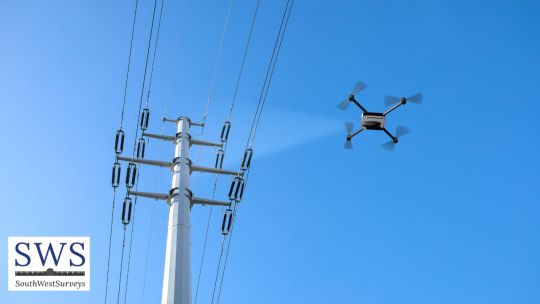
#Drone Surveyors Coleford#Drone Surveyors Patchway#Drone Surveyors Gloucestershire#Drone Surveyors Gloucester#Drone Surveyors Dursley#Drone Surveyors Kingswood#Drone Surveyors Tetbury#Drone Surveyors Tewkesbury#Drone Surveyors Yate#Drone Surveyors Moreton-in-Marsh#Youtube
2 notes
·
View notes
Text
Routing Optimization Software: Transforming Modern Delivery Operations
In today’s fast-paced logistics and delivery industry, efficiency is everything. As companies scale and consumer expectations rise, traditional routing methods often fall short. That’s where routing optimization software steps in revolutionizing the way businesses plan, manage, and execute their deliveries.
With the help of advanced algorithms and real-time data, this powerful technology has become an indispensable tool for logistics managers, delivery companies, and fleet operators. In this blog, we’ll explore what routing optimization software is, its core benefits, and why your business needs it now more than ever.
What is routing optimization software?
Routing optimization software is a technology solution that uses algorithms, GPS data, traffic patterns, and delivery constraints to calculate the most efficient routes for delivery drivers. Unlike static route planning or manual mapping, this software dynamically adjusts based on real-time conditions like traffic congestion, road closures, or last-minute delivery changes.

Whether you're operating a small fleet or managing nationwide logistics, routing optimization software automates a complex task that would otherwise take hours to plan manually—while offering better accuracy and adaptability.
Key Features of Routing Optimization Software
To understand why routing optimization software is essential, let’s look at the features that make it powerful:
1. Dynamic Route Planning
It continuously adjusts routes based on live data—traffic jams, weather disruptions, or sudden delivery changes are automatically accounted for.
2. Multi-Stop Route Optimization
Efficiently handles multiple delivery stops, reducing the distance and fuel consumption while ensuring timely arrivals.
3. Driver Assignment and Load Balancing
Automatically assigns deliveries to the right drivers based on vehicle capacity, location, and time windows.
4. Geofencing and Route Deviation Alerts
Get notified if a driver veers off the planned route, helping maintain delivery accuracy and security.
5. Integration with Fleet Management Tools
Syncs with telematics, fuel management, and last-mile delivery platforms like Cigo Tracker’s Optimized Routing for seamless operations.
Benefits of Using Routing Optimization Software
Adopting routing optimization software isn’t just about convenience it directly impacts your business's bottom line. Here’s how:
1. Reduced Operational Costs
By finding the most efficient delivery routes, companies can cut fuel usage, reduce wear and tear on vehicles, and lower overtime costs.
2. Improved Delivery Timeliness
Deliveries arrive on time more often, which improves customer satisfaction and builds brand trust.
3. Increased Delivery Capacity
With optimized routes, the same number of drivers can handle more deliveries per day, scaling operations without expanding the fleet.
4. Lower Environmental Impact
Reducing travel distance and fuel consumption also lowers your company’s carbon footprint—a win for sustainability goals.
5. Real-Time Visibility
Track deliveries in real-time, provide ETAs to customers, and monitor driver performance with data-rich dashboards.
Industries That Benefit From Routing Optimization Software
1. E-commerce and Retail
With high delivery volumes and strict timelines, e-commerce companies rely on optimized routing for next-day or same-day deliveries.
2. Food and Beverage Delivery
Time-sensitive deliveries such as meal prep, catering, or grocery services need efficient route scheduling to maintain product freshness.
3. Field Service and Maintenance
Technicians can visit more service locations per day, increasing productivity and reducing customer wait times.
4. Healthcare and Pharmacy Delivery
Quick, accurate deliveries of medical supplies or prescriptions are crucial and routing optimization software ensures reliability.
Cigo Tracker’s Approach to Routing Optimization
Cigo Tracker’s routing optimization software is designed to meet the demands of modern delivery operations. Its intelligent routing engine adapts to various delivery models and includes:
Real-time traffic intelligence
Customizable delivery windows
Proof of delivery (POD) features
Driver mobile app for live updates
Seamless integration with dispatching and customer engagement tools
Whether you're managing last-mile logistics or a specialized delivery fleet, Cigo Tracker ensures you stay efficient and competitive.
Explore the Optimized Routing page to learn how it integrates into your workflow.
How to Choose the Right Routing Optimization Software
When selecting the ideal routing software for your business, consider the following:
Scalability: Can it handle future growth and increasing delivery volumes?
Ease of Use: Is the dashboard user-friendly for dispatchers and drivers?
Integration Capabilities: Can it sync with your existing systems?
Customer Support: Is help available when issues arise?
Customization: Does it allow configuration based on your unique delivery constraints?
Remember, the right solution should not only optimize routes but also empower your team to perform better with fewer resources.
Real-World Impact of Routing Optimization Software
Let’s consider a quick case study. A mid-sized meal delivery company using manual planning switched to Cigo Tracker’s routing optimization software. The results:
25% increase in daily deliveries
30% reduction in fuel costs
40% fewer customer complaints related to late deliveries
These figures illustrate how powerful the right technology can be for operational efficiency and customer satisfaction.
The Future of Routing Optimization Software
As AI and machine learning continue to evolve, routing optimization software will become even more predictive. Expect features like
AI-based delivery time forecasting
Predictive maintenance alerts
Automated rescheduling
Voice-assisted route updates
With growing demands for faster, greener, and more reliable deliveries, routing software is set to become the backbone of logistics automation.
Conclusion
If your business depends on deliveries, investing in routing optimization software is no longer optional; it’s essential. With benefits ranging from cost reduction to improved delivery times and better customer experiences, this technology provides a competitive edge in a crowded market. Cigo Tracker’s optimized routing solution is built for businesses like yours. Ready to elevate your operations? Visit Cigo Tracker Optimized Routing page to get started today.
1 note
·
View note
Text
Distribution Revolution: 8 Proven AI Wins for Smarter Logistics!
From Chaos to Control: How AI Is Revolutionizing Distribution

But this morning felt different. Because this time, Meera wasn’t alone in her fight against inefficiencies — she had AI by her side.
The Distribution Dilemma For years, distribution networks across industries have struggled with unpredictable demand, misrouted deliveries, stock shortages, and rising fuel costs. Meera knew this too well. On peak festival days, even the best planning would go haywire, warehouses would overflow, trucks would miss deadlines, and customer complaints would skyrocket.
Despite using software for route mapping and stock control, the system lacked one thing: intelligence — the ability to learn, predict, and optimize in real time.
That’s when Orion Logistics decided to introduce Artificial Intelligence into the mix.
Enter AI: Not Just Automation — Intelligence The transformation began with small steps.
First, they integrated an AI-powered demand forecasting tool. It analyzed past sales trends, seasonal fluctuations, market shifts, and even social media buzz. What once took a week of manual effort was now delivered in under a minute — accurate demand projections for each product, region, and store.
Then came intelligent route optimization. Using real-time traffic data, weather predictions, fuel efficiency stats, and even driver behavior, the AI platform re-routed deliveries dynamically. A delivery that previously took 4 hours was now done in 2.7 — with less fuel, fewer stops, and no delays.
For Meera, this was magic.
“We started delivering more, with fewer vehicles. Our distribution costs dropped by 22% in just two months,” she said, smiling at the dashboard flashing green metrics.
Predictive Maintenance: Trucks That Talk A week into the rollout, Meera received a ping: “Truck #14 likely to face engine issues in 3 days.”
It was no guesswork. The AI had monitored vibration sensors, fuel consumption, engine heat, and maintenance history — and predicted a failure before it even happened.
The vehicle was serviced preemptively. The delivery was not delayed. That truck was back on the road before anyone even knew there was a problem.
This wasn’t just logistics anymore. This was logistics with foresight.
Smart Warehousing: AI at the Heart of the Hub In the warehouse, things were changing too. AI-powered robots now picked, packed, and labeled items. Cameras equipped with computer vision checked for packaging defects. Inventory levels were monitored in real-time, and re-order requests were auto-triggered by intelligent algorithms — no more stockouts or overstocking.
Meera used to carry a stack of paper sheets and clipboards. Now, she carried just a tablet — and everything she needed was in it.
The Human Touch — Enhanced by AI Despite the tech transformation, Meera’s job didn’t vanish. It evolved.
Her team no longer wasted hours fixing broken processes. They now focused on customer satisfaction, strategy, and growth. AI handled the grunt work, the number crunching, and the patterns. Humans still made the final calls — with better insights and fewer errors.
The Results
28% Reduction in Delivery Time
40% Better Route Efficiency
19% Decrease in Operational Costs
24/7 Predictive Monitoring of Fleet Health
More importantly, customer satisfaction soared — because promises were kept, every single time.
For more detailed insights, on how AI is transforming the future please click the link below:
Final Thoughts: Distribution’s New Backbone
AI in distribution isn’t just a luxury — it’s becoming a necessity. Whether it’s last-mile delivery, inventory control, fleet management, or customer communication — AI is transforming distribution from a reactive task into a proactive, intelligent engine.
And for professionals like Meera, it’s not about losing control to machines — it’s about gaining superpowers.
With tools like Teemify, businesses can harness AI to automate logistics, predict disruptions, and drive smarter decisions in real time.
Because when artificial intelligence meets human experience, distribution becomes truly unstoppable.
#aiindistribution#smartdistribution#logisticsai#distributionautomation#intelligentsupplychain#distributiontechnology#smartdeliverysystems#intelligentlogistics#realtimelogistics
1 note
·
View note
Text
Drone Surveying: The Epitome of Precision & Aerial Intelligence
In the modern age of rapid infrastructure development, environmental assessment, and data-driven decision-making, drone surveying has emerged as a revolutionary force in the world of geospatial technology. Known for its exceptional precision and efficiency, drone surveying—also referred to as UAV (Unmanned Aerial Vehicle) surveying—is redefining the way we capture, process, and analyze spatial data.
What Is Drone Surveying?
Drone surveying is the process of using unmanned aerial vehicles equipped with sensors, cameras, and GPS receivers to collect geospatial data from the air. Unlike traditional surveying methods that often require significant manpower and time, drone surveying allows surveyors to access and map large or hard-to-reach areas quickly, accurately, and cost-effectively.

High-resolution imagery, LiDAR sensors, multispectral cameras, and thermal sensors can be mounted on drones depending on the application. The data captured is processed using photogrammetry software to create detailed maps, 3D models, orthophotos, and digital elevation models (DEMs).
Advantages of Drone Surveying
Unmatched Accuracy: With RTK (Real-Time Kinematic) and PPK (Post-Processed Kinematic) technologies, drone surveys can achieve centimeter-level accuracy, making them ideal for engineering, construction, and infrastructure projects.
Rapid Data Collection: Drones can survey hundreds of acres in a single flight, drastically reducing field time compared to traditional methods.
Cost Efficiency: Reduced manpower, minimal equipment setup, and quick data acquisition translate into lower overall project costs.
Enhanced Safety: Surveying hazardous, unstable, or dangerous terrains—such as cliffs, mines, and rooftops—can be done safely from the air without putting human lives at risk.
Versatile Applications: From construction site monitoring and agriculture to mining, forestry, flood modeling, and disaster assessment, drone surveying is applicable across numerous sectors.
Key Applications of Drone Surveying
Construction & Infrastructure: Drones provide topographic maps and volumetric calculations essential for earthworks, road design, and structural planning.
Agriculture: Multispectral imaging helps assess crop health, irrigation issues, and pest infestations with precision.
Mining & Quarrying: Drones offer real-time volume measurements of stockpiles and monitor ongoing excavation work efficiently.
Environmental Monitoring: Drones assist in tracking deforestation, erosion, and changes in water bodies with time-lapse mapping.
Urban Planning: They help in creating 3D city models for infrastructure development and land use planning.
The Future of Drone Surveying
The integration of AI, cloud computing, and machine learning is enhancing the analytical capabilities of drone data. Real-time insights, automation, and predictive modeling are becoming more accessible through user-friendly platforms.
As regulatory frameworks evolve and drone technology becomes more affordable, even small businesses and local governments are adopting UAV-based surveying to streamline projects and boost productivity.
Conclusion
Drone surveying stands as the epitome of precision and aerial intelligence, transforming industries with its dynamic capabilities. It not only improves the accuracy and speed of data collection but also opens up new possibilities for innovation in mapping and analysis. For anyone involved in geospatial projects—from engineers and architects to environmentalists and city planners—embracing drone surveying is no longer optional; it is essential for staying ahead in the digital age.
0 notes
Text
How a Riyadh-Based Company is Revolutionizing Logistics Tracking
In today’s fast-paced world, logistics is no longer a support function — it’s a growth driver. Across the globe, businesses are investing heavily in smarter ways to manage deliveries, monitor fleets, and improve their customer experience. But in the heart of Riyadh, one company is setting new standards in how logistics tracking is being done.

Meet Five Programmers, a local software powerhouse that's changing the way businesses in Saudi Arabia approach their logistics operations. With custom-built solutions tailored to the region's unique needs, they’re redefining what’s possible in the supply chain sector.
The Digital Shift in Riyadh’s Logistics Sector
As the capital of Saudi Arabia, Riyadh is not just a political hub — it’s a growing logistics hotspot. Thanks to Vision 2030 and the rise of e-commerce, demand for real-time, tech-driven solutions is accelerating.
Businesses here face challenges like:
Urban traffic congestion
Delivery delays due to route inefficiencies
Limited visibility into vehicle performance
Lack of centralized data systems
To overcome these hurdles, companies are seeking smarter tools that offer more than just basic GPS tracking.
Local Challenges Need Local Solutions
Most international logistics platforms are designed with global use cases in mind. They rarely address region-specific pain points, such as Arabic-language support, local compliance laws, or road network behaviors within Riyadh.
This is where a homegrown player like Five Programmers steps in — with a deep understanding of both the technical and local business environments.
Their solutions don’t just track movement. They provide intelligence.
What Makes Five Programmers Different?
Rather than offering a one-size-fits-all software, Five Programmers focuses on building customized logistics tracking platforms that adapt to your exact operational needs.
Some of the standout features of their systems include:
🔹 Real-Time Vehicle Visibility
Track all delivery vehicles on a single interactive map. See where your assets are, estimated arrival times, and current status in real time.
🔹 Route Optimization Algorithms
Their solution identifies the most efficient paths using local traffic data — reducing fuel consumption and delivery time.
🔹 Smart Alerts & Notifications
Get notified when a vehicle deviates from its route, is idle too long, or enters/exits a geo-fenced area.
🔹 Multilingual Interfaces
Designed for local teams, their dashboards support both Arabic and English, making adoption easy across your workforce.
🔹 Integration-Ready
Need to connect with your existing ERP, CRM, or warehouse systems? No problem. They provide seamless integrations via APIs.
Industries That Benefit in Riyadh

The demand for better logistics tracking is spreading across various sectors in Riyadh, including:
E-Commerce: Improve delivery reliability and customer satisfaction
Pharma & Medical Supply: Ensure temperature-sensitive goods are safely delivered
Construction: Schedule materials and equipment with precision
Retail Chains: Manage store replenishment efficiently
In each of these verticals, better tracking leads to better performance.
Aligning with Vision 2030 Goals
Saudi Arabia’s Vision 2030 emphasizes digital innovation, operational efficiency, and reduced dependency on manual processes. For logistics firms in Riyadh, this means one thing: adapt or fall behind.
By developing modern tracking systems locally, Five Programmers is helping companies embrace change without friction. Their tools are built with compliance in mind and can easily scale as the business grows.
Case Study: A Riyadh-Based Courier Company
A medium-sized courier company in Riyadh partnered with Five Programmers to digitize their entire delivery process. Before that, they relied on phone calls and spreadsheets to monitor deliveries.
After implementing the new platform:
On-time delivery rates improved by 34%
Customer complaints dropped by 41%
Fleet fuel usage decreased by 22%
Managers had live insight into driver performance
These results aren’t just numbers — they reflect real business transformation made possible by smarter tools.
Technology That Powers the Change
Behind the scenes, Five Programmers uses cutting-edge technologies like:
Cloud hosting for 24/7 access
AI-based route planning
Custom analytics dashboards
Secure data encryption
Yet the real power lies in their ability to customize. Whether you run five vehicles or five hundred, the platform is designed to grow with your needs.
Focus on Support and Service
One of the main reasons clients in Riyadh prefer Five Programmers is their commitment to ongoing support. Unlike offshore providers, this local team is available to:
Offer on-site or remote training
Provide real-time issue resolution
Roll out updates based on Saudi market trends
This personalized approach makes it easier for companies to adopt and benefit from the software quickly.
Looking Ahead: The Future of Logistics in Riyadh

The logistics space in Saudi Arabia is evolving fast. Concepts like drone deliveries, warehouse automation, and AI-based inventory systems are no longer futuristic ideas — they’re on the horizon.
With tools from Five Programmers, businesses in Riyadh are laying the groundwork to integrate with such innovations in the near future.
By investing in logistics tracking today, companies are not just solving current problems — they’re preparing for a smarter, faster, and more agile future.
Final Words: Innovation That Moves with You
In the competitive world of logistics, visibility is everything. Companies that know exactly where their goods are — and how to optimize movement — are the ones that stay ahead.
With a powerful partner like Five Programmers, Riyadh-based businesses don’t have to rely on foreign platforms that lack local relevance. They can now build smarter tracking solutions, tailored to their workflows, their people, and their goals.
In a city that never stops moving, isn’t it time your logistics moved smarter?
Quick FAQ
Q: Is this logistics tracking solution mobile-friendly? Yes, the platform is responsive and works across smartphones, tablets, and desktops.
Q: Can it work for delivery teams across different cities? Absolutely. While the company is based in Riyadh, the platform supports multi-city operations.
Q: Do I need to replace my current systems? Not necessarily. Five Programmers offers integration options so you can keep your existing ERP or CRM.
Q: How long does implementation take? Most mid-sized clients go live within 2–3 weeks, depending on customization needs.
#mobile app development company in saudi arabia#logistics management software#flutter app development company in riyadh#android app development#100 days of productivity#ai driven logistics platform in riyadh#logistics mobile app development in riyadh#logistics app development
0 notes
Text
Road Condition Monitoring System(RCMS): Enhancing Efficiency with AI-Powered Solutions
The quality and sustainability of road infrastructure play a pivotal role in societal development, economic growth, and the safety of communities. To address the challenges of road construction and maintenance, advanced digital tools such as Road Condition Monitoring Systems (RCMS) are becoming indispensable. Leveraging technologies like AI-powered pothole detection, data analytics, and interactive visualization, RCMS ensures efficient planning, monitoring, and maintenance of road networks.
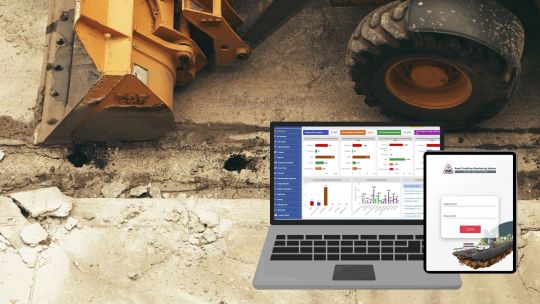
#ai and gis road monitoring solutions#geospatial road management solutions#geospatial road monitoring system#gis based pothole mapping and detection#gis based road condition monitoring system#gis based road inspection software#gis based road survey solutions#gis data analysis for road monitoring#gis mapping for road condition analysis#gis road maintenance solutions#land management system#gis tools for road condition assessment#pothole detection using gis technology#real time road condition monitoring gis#road condition assessment using gis#road condition monitoring using gis#road infrastructure monitoring with gis#road maintenance gis software#road safety monitoring with gis systems#road surface monitoring with gis#smart road condition monitoring gis
1 note
·
View note
Text
How to Migrate from Legacy ERP to Microsoft Dynamics 365 Finance and Supply Chain Management
Switching from a legacy ERP system to a modern cloud solution can feel like a daunting process. For many businesses, it is not just about upgrading software. It is about transforming the way the organization operates. The good news is, with the right planning and a clear roadmap, migrating from your outdated ERP to Microsoft Dynamics 365 Finance and Supply Chain Management can be smooth, strategic, and even energizing.
In this blog, we will walk through what the migration process really looks like, why companies are making the move, and how to do it the smart way without unnecessary stress or disruption.
Why Businesses Are Leaving Legacy ERP Behind
Legacy ERP systems served their purpose for years. But today’s business environment is faster, more complex, and more connected than ever before. Legacy systems are often rigid, hard to integrate with modern tools, and costly to maintain. They are usually hosted on premise, which means updates are manual and scalability is limited.
In contrast, Microsoft Dynamics 365 Finance and Supply Chain Management is cloud based, modular, and highly flexible. It provides real time visibility across your operations and financials, with built in AI and automation tools that help reduce errors, streamline processes, and improve decision making.
So how do you go from where you are now to where you need to be?
Step One Assess Your Current ERP Environment
Before you make any moves, take a good look at your existing system. What works? What does not? Identify the pain points your teams are facing, whether it is reporting delays, data silos, or manual workarounds.
This is also the time to review your data. Are there duplicate records? Incomplete fields? Outdated vendor lists? Cleaning your data now will save you time and headaches later in the migration process.
Step Two Define Your Business Goals
This step is often skipped, but it is critical. Do not migrate just to keep up with tech trends. Get clear on why you are migrating. Do you want faster month end reporting? Better inventory forecasting? Real time dashboards?
Document these goals and share them with your implementation team. This will keep the project focused and aligned with your business strategy.
Step Three Choose the Right Migration Partner
You do not have to do this alone. In fact, you should not.
Look for a Microsoft certified partner with experience in migrating from legacy systems. They should understand both your current ERP environment and the Dynamics 365 landscape. A good partner will help with data mapping, customizations, integrations, and testing, and also provide ongoing support after go live.
Ask potential partners for references, project timelines, and an outline of their migration methodology.
Step Four Build a Migration Plan
Your migration plan should be detailed but flexible. It typically includes the following:
A full data migration strategy
A system configuration and customization roadmap
Integration requirements with other tools such as CRM or HR software
A timeline for testing, training, and deployment
Many businesses choose a phased approach, migrating one module or business unit at a time. This can reduce disruption and allow teams to adapt gradually.
Step Five Test and Train
Testing is where the rubber meets the road. Simulate real world processes in a test environment to uncover any issues before go live. Get feedback from users early and often.
At the same time, invest in training. Your people are your greatest asset and they need to feel confident in the new system. Offer hands on sessions, create user guides, and appoint internal champions to provide ongoing support.
Step Six Go Live and Optimize
Once testing is complete and your users are trained, it is time to go live. But remember, go live is not the finish line. It is just the beginning of a new chapter.
Monitor the system closely in the first few weeks. Address any issues quickly and gather user feedback. Most importantly, continue to optimize. Microsoft releases regular updates with new features and performance improvements. Stay informed and take advantage of them.
Conclusion
Migrating from a legacy ERP to Microsoft Dynamics 365 Finance and Supply Chain Management is a major step, but it does not have to be overwhelming. With a clear strategy, the right partner, and a focus on your business goals, you can make the move confidently and efficiently.
And once you do, you will unlock better visibility, stronger performance, and a platform that grows with your business, not one that holds it back.
If your current ERP feels more like a limitation than a solution, it might be time to turn the page and start fresh with Dynamics 365.
0 notes
Text
Land Surveys: Defining Boundaries with Unmatched Accuracy
Land surveys are an essential component of property ownership and development in Australia. They serve as the foundation for defining legal boundaries, resolving disputes, and ensuring construction compliance. Whether for residential subdivisions, infrastructure projects, or rural property assessments, land surveys play a vital role in shaping the landscape with precision and clarity.
These surveys are not merely about measuring distances. They involve a complex process that incorporates advanced technologies, legal knowledge, and detailed spatial analysis to establish exact property lines and geospatial features. In a country like Australia, with its vast and varied terrain, the need for accurate and reliable land surveys is more critical than ever.

Types of Land Surveys in Australia
Different projects require different types of land surveys, each serving a specific purpose:
Cadastral Surveys These are primarily concerned with property boundaries. Cadastral surveys are often required during property sales, subdivisions, and legal disputes to confirm ownership lines and compliance with land titles.
Topographic Surveys Used to map natural and man-made features of a parcel of land, topographic surveys are crucial for planning and development. They provide essential data on elevation, vegetation, structures, and drainage systems.
Construction Surveys These are conducted to guide construction projects, ensuring that buildings, roads, and utilities are positioned correctly according to design specifications.
Hydrographic Surveys Relevant for coastal and marine development, hydrographic surveys measure bodies of water to support navigation, dredging, and marine construction activities.
Engineering Surveys Engineering surveys support the design and monitoring of infrastructure such as highways, bridges, and pipelines.
The Technology Behind Land Surveys
Modern land surveys rely on sophisticated technology to achieve unmatched accuracy. Equipment such as Total Stations, GPS receivers, aerial drones, and 3D laser scanners enable surveyors to collect precise spatial data, even in challenging environments. Geographic Information Systems (GIS) and Computer-Aided Design (CAD) software are then used to process this data, producing detailed maps, models, and legal documents.
This integration of advanced tools ensures not only accuracy but also efficiency, reducing the risk of costly errors and delays in construction and legal processes.
Legal and Regulatory Framework in Australia
In Australia, land surveys must adhere to strict legal and regulatory standards. Licensed surveyors are the only professionals authorised to perform boundary surveys and issue certified survey plans. These professionals operate under legislation specific to each state and territory, ensuring consistency and legal validity across jurisdictions.
Survey plans must be lodged with the relevant government authorities, such as the land titles office, and are often necessary for land registration, development applications, and council approvals.
Why Accuracy Matters in Land Surveys
Precision in land surveys is not just a technical requirement—it’s a legal necessity. Incorrect boundaries can lead to disputes between property owners, complications in land development, and even litigation. Accurate surveys protect all parties involved in a land transaction and are indispensable for securing loans, obtaining insurance, and developing property without encroachments.
In urban environments, where space is limited and property values are high, the margin for error is extremely small. In rural and remote areas, surveys ensure proper land use and environmental compliance. Regardless of the setting, accurate land surveys provide a solid foundation for confident decision-making.
Applications of Land Surveys in Property Development
Property developers, architects, and engineers rely heavily on land surveys to guide every stage of a project—from initial planning to final inspection. Surveys influence:
Site layout and design feasibility
Compliance with zoning and planning regulations
Environmental impact assessments
Infrastructure placement and connectivity
Final handover and certification
Without precise land surveys, developments risk delays, non-compliance, and unexpected costs. Accurate data enables developers to mitigate risks and optimise the use of land in a responsible and profitable manner.
Choosing a Qualified Surveyor
For any project requiring land surveys, working with a qualified and licensed surveyor is essential. Surveyors must be accredited by the appropriate board in their state or territory and have extensive knowledge of local laws, terrain, and survey techniques.
When selecting a surveyor, consider their experience, reputation, and familiarity with the type of survey needed. A competent surveyor ensures not only technical accuracy but also legal reliability and regulatory compliance.
Conclusion: The Unseen Backbone of Property Ownership
Land surveys are the unseen backbone of property ownership, development, and infrastructure in Australia. They offer legal certainty, developmental clarity, and environmental responsibility. As urban areas expand and rural lands are repurposed, the demand for precise, reliable land surveys continues to grow.
From private homeowners to government agencies, anyone dealing with land has a vested interest in the integrity of these surveys. By investing in professional, accurate land surveys, stakeholders protect their assets, streamline their projects, and uphold the legal and spatial order that defines modern Australian landscapes.
0 notes
Text
Autonomous Vehicle Control System: The Technology Powering Self-Driving Cars

The rise of autonomous vehicles (AVs) is transforming the future of transportation. What was once a science-fiction concept is now a rapidly evolving reality on city roads and highways worldwide. At the heart of this revolution is the Autonomous Vehicle Control System—a complex integration of software, hardware, and algorithms that enables a vehicle to operate without direct human intervention. This system acts as the vehicle's "brain," managing perception, decision-making, and actuation with remarkable precision and safety.
What is an Autonomous Vehicle Control System?
An Autonomous Vehicle Control System is a multi-layered system that allows a vehicle to perceive its environment, make driving decisions, and control vehicle movement in real time. It combines technologies from various fields including robotics, artificial intelligence (AI), sensor fusion, and control theory.
The control system must ensure the vehicle can:
Detect and understand its surroundings
Plan safe and efficient routes
Execute actions like steering, braking, and acceleration
Respond to dynamic and unpredictable conditions
To achieve this, the system is typically structured into three main layers:
Perception
Planning
Control
Each of these layers plays a crucial role in enabling autonomous behavior.
1. Perception Layer
The perception layer is responsible for interpreting data from the vehicle's sensors to build a real-time understanding of the environment. It enables the car to detect and classify objects, identify road markings, recognize traffic signals, and monitor surrounding vehicles and pedestrians.
Common Sensors Used:
Cameras: Capture visual data for recognizing signs, lights, and obstacles
LiDAR (Light Detection and Ranging): Creates high-resolution 3D maps of surroundings
Radar: Measures the speed and distance of moving objects
Ultrasonic Sensors: Used for low-speed and close-range detection (e.g., parking)
GPS and IMU (Inertial Measurement Unit): Help determine vehicle position and orientation
These sensors generate large volumes of data, which are processed using advanced algorithms, often powered by machine learning and computer vision, to identify potential hazards and define drivable space.
2. Planning Layer
The planning layer is responsible for making decisions based on the data interpreted by the perception layer. It answers questions such as:
Where should the vehicle go?
What maneuvers should it perform?
How can it safely interact with other road users?
Planning is typically divided into:
Route Planning: Determines the optimal path from the start point to the destination using GPS data and maps.
Behavior Planning: Handles real-time decisions such as when to change lanes, overtake, or yield.
Trajectory Planning: Generates a safe and smooth path considering constraints like speed limits, curves, and nearby obstacles.
Algorithms like finite state machines, decision trees, and reinforcement learning are often used to make these decisions.
3. Control Layer
The control layer executes the planned trajectory by sending precise commands to the vehicle’s actuators, which manage steering, throttle, and braking. It ensures the vehicle follows the desired path while maintaining comfort and safety.
Control Methods:
PID Control (Proportional-Integral-Derivative): A traditional method used for tasks like maintaining a set speed or lane position.
Model Predictive Control (MPC): An advanced technique that predicts future vehicle states and optimizes control inputs over a time horizon.
Adaptive and Fuzzy Control: These allow for more flexible decision-making in complex or uncertain environments.
The control system must be robust, real-time capable, and fail-safe, especially when dealing with dynamic scenarios such as merging traffic or emergency stops.
Real-World Applications
Autonomous vehicle control systems are being developed and deployed across a range of platforms:
Passenger Cars: Tesla Autopilot, Waymo, and Cruise use advanced control systems for Level 2 to Level 5 autonomy.
Delivery Robots: Self-driving delivery bots use simplified AV control systems to navigate sidewalks and urban areas.
Autonomous Trucks: Companies like TuSimple and Embark are building systems for long-haul freight trucks.
Shuttles and Pods: Low-speed autonomous shuttles in campuses and smart cities use similar systems tailored to pedestrian-heavy environments.
Challenges in Autonomous Vehicle Control Systems
Despite major advancements, several challenges must be addressed:
Sensor Reliability: Weather, lighting, and physical obstructions can affect sensor performance.
Real-Time Processing: Control systems must process large datasets and make split-second decisions.
Safety and Redundancy: Systems must have multiple fail-safes to ensure passenger and pedestrian safety.
Ethical and Legal Issues: Programming ethical decision-making into machines is a complex societal issue.
Integration with Infrastructure: AVs will need to communicate with traffic signals, smart roads, and other vehicles (V2X communication).
Future Trends
The future of autonomous vehicle control systems is closely tied to advancements in AI, data processing, and connectivity. Some key trends include:
Artificial Intelligence and Deep Learning: Used for more accurate object detection and behavior prediction.
5G and Edge Computing: Enable faster data transfer and localized processing for real-time decisions.
Digital Twins: Virtual replicas of real vehicles to test and optimize control strategies.
Vehicle-to-Everything (V2X): Communication with infrastructure, other vehicles, and pedestrians to enhance situational awareness.
As these technologies evolve, control systems will become smarter, safer, and more capable of handling increasingly complex driving scenarios.
Conclusion
The Autonomous Vehicle Control System by Servotechinc is the backbone of self-driving technology. It brings together perception, planning, and control in a seamless loop that allows vehicles to operate safely and efficiently in real-world environments. As advancements continue, these systems will become more refined, reliable, and ubiquitous, leading us closer to a future where autonomous transportation is not just a possibility—but a norm.
From revolutionizing urban mobility to reshaping global logistics, autonomous vehicle control systems are driving us into a smarter, safer, and more connected world.
0 notes
Text
Understanding What Surveyors Do: A Guide for Homeowners and Builders
Surveyors play an essential role in the building and construction industry. For homeowners and builders alike, understanding what surveyors do is crucial to ensuring the success of a project. Whether it's for property development, construction, or land management, surveyors offer specialized services that ensure that land is used efficiently, legally, and safely. This guide will delve into the various tasks that surveyors handle and how they impact your building or renovation project.

What Do Surveyors Do?
At the core of their work, surveyors are professionals who measure and map the land. However, their role goes beyond basic measurements. Surveyors conduct precise assessments of land, boundaries, and property to provide critical data for construction, planning, and legal purposes.
Surveyors use advanced tools and technologies such as GPS, laser scanners, and computer software to perform their tasks accurately. Their work ensures that all developments are within the legal frameworks, codes, and standards required by local authorities.
Types of Surveying Services
Surveying encompasses a variety of services, each tailored to meet different needs in construction and property management. The following are some common types of surveys that surveyors provide:
1. Land Surveying
Land surveying is perhaps the most well-known area of a surveyor’s work. It involves determining the physical boundaries of a property. A land surveyor helps establish the accurate boundaries of a plot of land, often by marking the corners of the property with physical markers.
This type of survey is crucial when purchasing or selling land, as it ensures both parties agree on the exact limits of the property. It is also a requirement for building projects to ensure that the construction stays within the legal boundary lines.
2. Building and Construction Surveying
For builders, understanding what surveyors do in terms of construction is vital. Building surveyors assess the suitability of a site for construction and monitor the work as it progresses. They ensure that the structure is sound, complies with building codes, and meets the necessary safety standards.
These surveyors may be involved in various stages of the project, from initial planning to overseeing construction and post-construction inspections.
3. Topographic Surveying
Topographic surveys map the features of a particular area, including natural elements such as trees, water sources, and elevations, as well as man-made structures. These surveys help architects and engineers plan how a project will interact with the surrounding environment.
The data collected from topographic surveys can be used to design drainage systems, roads, and buildings, ensuring that the construction integrates seamlessly into the landscape.
4. Engineering Surveying
Engineering surveying involves gathering detailed data for the design, construction, and maintenance of infrastructure projects like roads, bridges, and tunnels. Surveyors in this field provide precise measurements to guide the construction process and ensure that structures are built according to design specifications.
Engineering surveyors often work closely with civil engineers to ensure the integrity of infrastructure projects.
5. Environmental Surveying
Environmental surveyors assess the impact of construction projects on the natural environment. This includes evaluating the effects on local ecosystems, soil conditions, and water flow. Environmental surveys are often required before construction to ensure that the development complies with environmental regulations.
Why Surveying is Essential for Homeowners and Builders
Understanding what surveyors do is essential for both homeowners and builders. Here are some reasons why surveyors are an indispensable part of any building or development project:
Accurate Property Boundaries
Surveyors help define property boundaries, preventing disputes with neighbors and ensuring that your construction project does not encroach on someone else’s land. Accurate boundary markers are essential for avoiding legal issues in the future.
Compliance with Regulations
Construction projects must comply with various local and national regulations. Surveyors ensure that projects adhere to zoning laws, building codes, and safety standards. This compliance is vital to avoiding fines, delays, or even the demolition of improperly built structures.
Risk Mitigation
Surveyors assess the risks associated with a construction site, such as soil stability, flooding risks, and accessibility. This helps builders and homeowners make informed decisions about the viability of a project and make adjustments if necessary to ensure safety.
Cost Savings
By conducting thorough surveys before construction, surveyors help identify potential problems early on. Addressing issues before construction begins can save significant amounts of money that would otherwise be spent on rework, delays, or legal challenges.
Improved Design and Planning
Surveyors provide accurate data that architects and engineers use to plan designs effectively. For example, a topographic survey can help design appropriate drainage systems or ensure that the building fits harmoniously within the natural landscape.
When Do You Need a Surveyor?
There are several occasions when you might need to hire a surveyor:
When buying or selling property: To verify boundaries and avoid disputes.
Before starting a construction project: To assess land conditions and ensure compliance with regulations.
For large-scale developments: Such as subdivisions or infrastructure projects, where precise data is necessary.
To resolve property disputes: If there is any uncertainty regarding property boundaries or land ownership.
Conclusion
In summary, understanding what surveyors do is vital for homeowners and builders to successfully navigate property transactions and construction projects. Surveyors are not only responsible for measuring land but also for ensuring compliance, reducing risks, and providing essential data for design and planning. Whether you're building a new home or simply managing a property, having a qualified surveyor on your team ensures that everything is set up correctly from the very beginning.
0 notes
Text
EU ViDA & the Future of VAT: What Businesses Need to Know

How Digital Reporting & E-Invoicing Will Reshape EU Tax Compliance by 2030
🔗 Original Article
Big changes are coming to VAT compliance in the EU. And if your business operates across borders—or even if you're just curious about where tax tech is heading—ViDA (VAT in the Digital Age) is something you’ll want to get familiar with, now.
Let’s break it down.
What Is ViDA, Anyway?
The EU’s ViDA reform package is all about digitizing VAT reporting. Set to kick in by July 2030, ViDA will require near real-time digital reporting for business-to-business (B2B) transactions and structured e-invoicing for intra-EU trades.
Why now? Because tax fraud is real. And messy. ViDA aims to clamp down on fraud, simplify compliance, and push for transparency with digital tools—something we’re already seeing in other parts of the world.
Key Changes at a Glance:
1. Real-Time Digital Reporting (DRR)
Businesses will have to report B2B intra-community transactions to tax authorities almost immediately after they happen. No more delayed quarterly summaries.
Includes:
Cross-border sales/purchases of goods & services
Reverse charge deals
Energy transactions
Triangulation (3-party trade) transactions
The goal: Catch fraud early, and get cleaner, faster VAT data.
2. Structured E-Invoicing Becomes Mandatory
From July 2030, you’ll need to send invoices in a specific, standardized digital format—based on EN16931.
Here’s the catch:
Invoices must go out within 10 days of the taxable event or payment
No more waiting for customer approval to send invoices to the tax authority
You’ll need a valid e-invoice to claim VAT deductions
Businesses will have to invest in compatible invoicing tools—but in return, they’ll gain speed, accuracy, and fewer admin headaches.
3. Central VIES: The Digital Backbone
ViDA will lean on an upgraded Central VIES system—a shared EU platform to monitor VAT transactions.
Benefits:
Shared access across tax authorities
Greater visibility = fewer fraud loopholes
Smooth integration with customs & payment data (CESOP, anyone?)
Think of it as the EU’s VAT watchdog. And it’s going to be watching in real-time.
What This Means for Your Business
Cross-Border Complexity
Each EU country can still have its own technical rules, even within the ViDA framework. That means:
You might need localized VAT software
You’ll probably want local advisors to guide you through the maze
Less Fraud, More Efficiency
ViDA isn’t just about catching tax cheats. It’s about:
Streamlining reporting
Making audits faster
Reducing paperwork and guesswork
If you’re already running a tight ship, ViDA will just make things cleaner.
Transition Period: 2030–2035
Even though 2030 is the official start, full adoption will likely roll out gradually to 2035. That said, don’t snooze on it.
Early adopters = fewer disruptions later.
Your Prep Checklist:
Upgrade your tech: Find tools that support EN16931 e-invoicing
Audit your current VAT process: What needs replacing?
Plan for cross-border differences: Map your country-specific needs
Stay in the loop: Follow pilot programs (e.g., Peppol) and EU announcements
Final Thought
ViDA is more than a compliance box to tick—it’s a glimpse into the future of global tax reporting. Businesses that take this seriously now will save themselves a world of trouble (and fines) down the road.
2030 may seem far away, but digital transformation doesn’t happen overnight.
Start now. Be ready.
Read the full breakdown here: https://tax.news/eu-vida-digital-reporting-e-invoicing-2030
#ViDA #VAT #TaxNews #DigitalReporting #EInvoicing #EUCompliance #Finance #B2B
1 note
·
View note